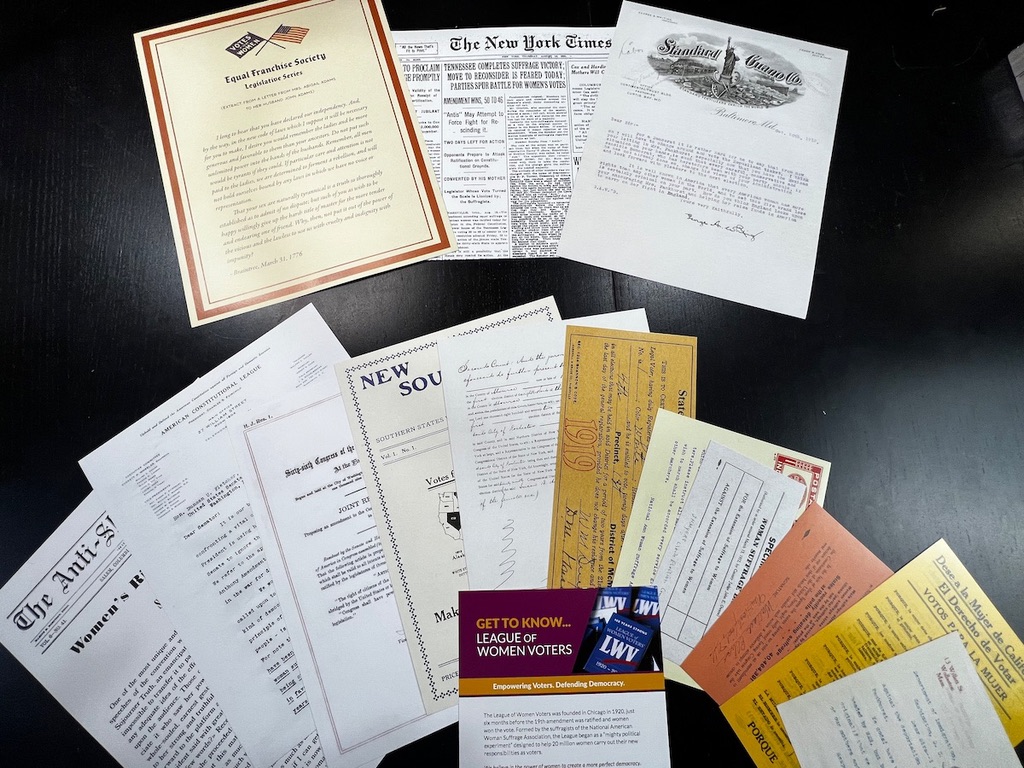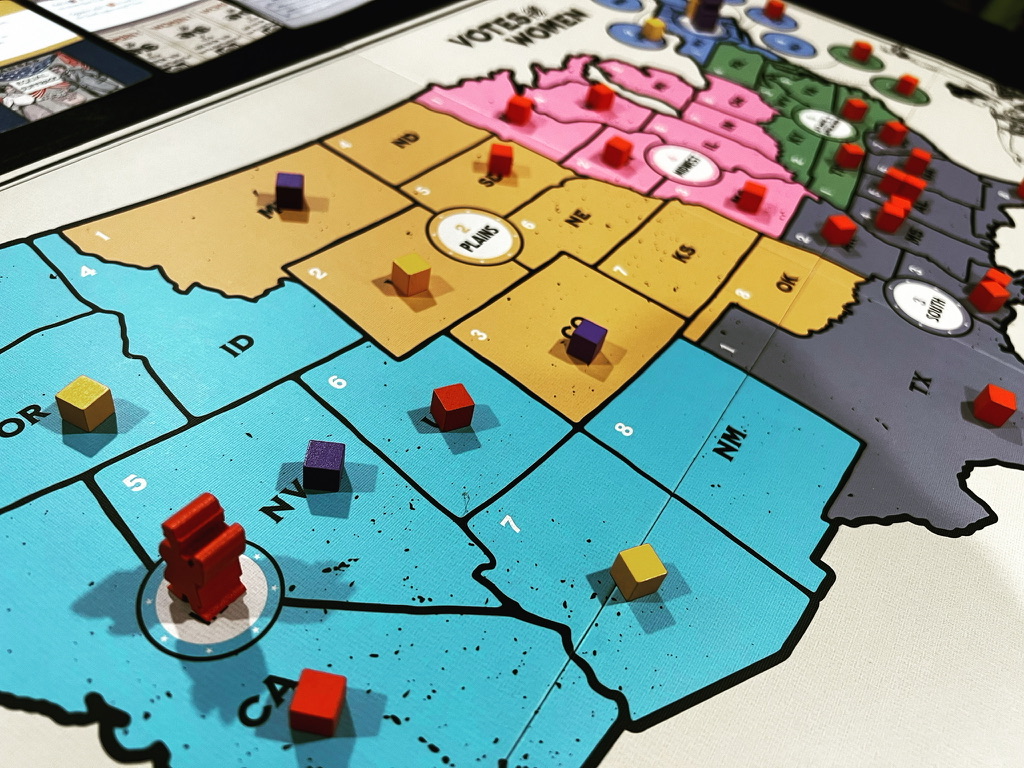I’ll come right out of the gate and tell you that while I’m no expert on the history of the women’s suffrage movement, I’m intensely excited about the idea of playing a game on it. This is an important piece of history that I know very little about, and that’s once of the major reasons I was so interested when the publisher asked if I would like to review it. Not only was it a chance to learn something new, but the game just looks stunning.
Votes For Women is a 1-3 player game from designer Tory Brown, and published by Fort Circle Games. It’s played on a map of the United States, and takes place in a 70 year window between pre-Civil War 1848 through to post-WWI 1920 when (historically) the United States added the nineteenth amendment to their constitution, ensuring that “The right of citizens of the United States to vote shall not be denied or abridged by the United States or by any State on account of sex”.

When I opened the box for the first time, I was surprised by the sheer amount of additional content. One by one, I started leafing through the various historical reproductions that are included. There are letters, memos, newspaper articles, ballots… and as I read through all this material I felt overwhelmed by a wave of emotion. This is a piece of history I’ve never really connected with in any meaningful way, but by the time I got to the letter from Abigail Adams to her husband John, my eyes were welling up with tears. It’s a fabulous package, put together with enough care and passion that it melted even my frozen heart.
So, how does it play? Well, this is quite literally a game of influence. One player will take the role of the suffragists, fighting to influence states to vote YES in favour of a woman’s right to vote. The other side will take the role of the opposition, fighting against the cause of woman’s suffrage and influencing states to vote NO. Through six turns, players will be adding and removing influence cubes on states, swinging them in one direction or the other on the titular issue.
Each side has a deck of cards that is organized into early, mid, and late period, allowing the course of the game to shift over time. The cards are quite winsome, with neat little historical notes at the bottom. Every round each player will play a card from their hand in one of four ways. One way is to just play the card for it’s event. Early on, the suffragists will have a rougher go with their events, enjoying small victories here and there, while the opposition starts with a wide swath of mild support across the entire eastern half of the US, and cards that allow them to build strongholds in the south.
Alternately, you could use your card to buy “buttons”. These are reproductions of actual campaign buttons of the era. Buttons behave as a resource that can give you a helping hand in a number of situations, particularly if you want to re-roll dice. Considering that a bad die roll can sometimes mean the loss of a turn, keeping an ample supply of buttons is a good idea.

You could choose to use your card to campaign in a region. Here you roll a number of dice equal to how many campaigners you have on the board and add that much influence in the region(s) where your campaigners are located. You can also spend one of those aforementioned buttons here to move campaigners into a new region, allowing you to distribute your influence to new and wonderful corners of the country.
Finally, you might play a card to lobby congress, where you’ll try to convince them to pass the nineteenth amendment (or… not). To do this you just spend your entire turn and your card to place a cylinder on the congress track (or remove one). This track is six spaces long. If the suffragist player fills in all six of those spaces, congress will officially propose the nineteenth amendment to the Constitution, and it will then be sent to the states to be ratified. If the suffragists fail to sway congress and the nineteenth amendment doesn’t get proposed by the end of turn 6, the opposition immediately wins.
Sending the amendment to the states is a sort of pivot point or phase change in the game. Now, any state that reaches its target of four cubes will immediately vote in favour or against ratification (depending on whose cubes those are), effectively locking that state in. If the suffragists can get 36 votes in favour, they win. If there are 13 votes against, the opposition wins.

If neither side has the required votes, the game goes into sudden death overtime… final voting. Here you just mop up the outstanding states one by one. Taking turns, each side chooses a state, rolls 1d6 and adds the number of their cubes in that state to their total. The higher total wins the state. Whoever hits their golden number of votes first wins the game!
It’s fascinating to watch the game unfold. In some ways, Votes For Women is similar to The Shores Of Tripoli, the first game published by Fort Circle. It’s quite controlled, and there is an anticipated arc to the deck. In Shores, that arc is built into the prerequisites some cards have before you can play them. Here, there are also prerequisites on a handful of cards, but the arc is baked in to the deck by way of its construction at the beginning of the game. With both games there is a terrific amount of choice and player agency inside that controlled arc, allowing the game to unfold in unexpected ways and still retain the big beats. In this way, a fun game can emerge and still tell a cohesive historical story.
It’s a terrific debut design from Tory Brown. It’s wonderfully accessible thanks to it’s streamlined rules and impressive presentation. It’s also, of course, educational. My wife was aghast when we learned that Catharine Beecher was against women’s suffrage. It can even have moments that are quite funny, like when one side sweeps in to take a state or influence congress, and the other sweeps in to perfectly reverse their gains in the very next turn. It’s a truly impressive package that feels important and noteworthy, and one that I think should join every collection.
Review copy provided by the publisher.


